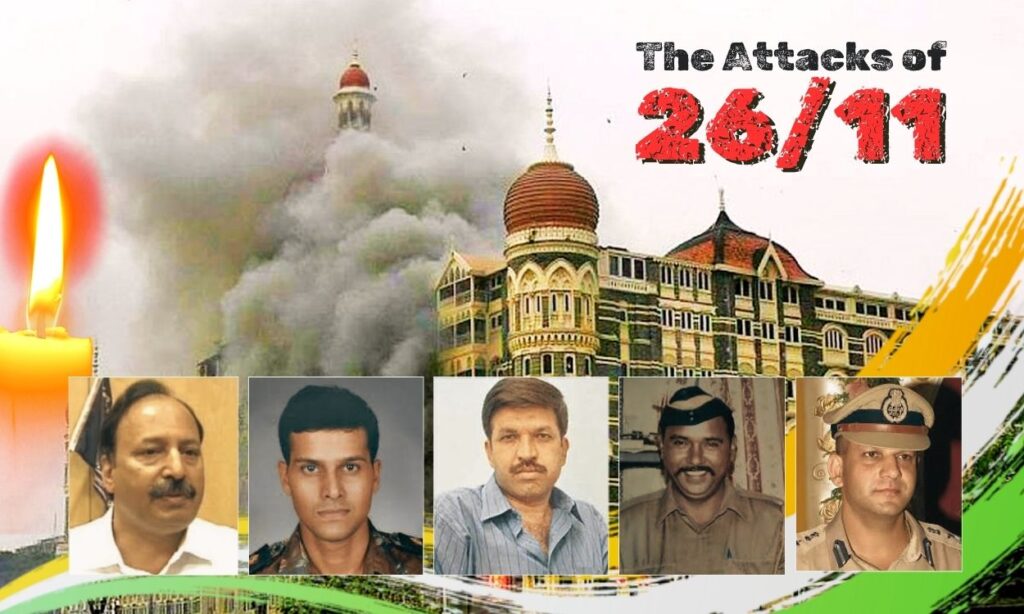Welcome to theustales.com.
On November 26, 2008, Mumbai witnessed one of the darkest chapters in its history. Referred to as 26/11, this was the day when ten heavily armed terrorists from the Lashkar-e-Taiba unleashed a series of coordinated attacks across the city. For four harrowing days, Mumbai’s iconic landmarks—Chhatrapati Shivaji Terminus, Taj Mahal Palace Hotel, Oberoi Trident, and Nariman House—became battlegrounds. The tragic event left 166 dead and over 300 injured, shaking the nation to its core and leaving a lasting impact on India’s fight against terrorism.
A City Under Siege
The attackers targeted prominent locations, including the Taj Mahal Palace Hotel, Oberoi Trident Hotel, Chhatrapati Shivaji Terminus (CST), and Nariman House. They arrived on Indian shores using inflatable dinghies after hijacking a fishing trawler. Armed with automatic weapons and grenades, the militants wreaked havoc and spread panic throughout Mumbai.
Chhatrapati Shivaji Terminus
CST was one of the first sites attacked. Terrorists opened fire on passengers, killing dozens and injuring many more. The bustling railway station turned into a scene of terror within minutes.
The Taj Mahal Palace Hotel and Oberoi Trident
At these luxury hotels, militants took hostages and engaged in prolonged gunfights with security forces. Many guests and staff were killed or injured in these relentless assaults.
Nariman House
Nariman House, a Jewish outreach center, was also attacked. The siege ended after two days, with six hostages killed and the attackers neutralized.
You may Also Like:
India’s Historic Triumph Against Australia in Perth: A New Chapter in Test Cricket
Acts of Heroism
Major Sandeep Unnikrishnan
Major Sandeep Unnikrishnan of the NSG led a rescue mission at the Taj Hotel. Despite being under heavy fire, he ensured the safe evacuation of hostages. The operation martyred him, and the nation posthumously awarded him the Ashoka Chakra for his bravery.
Tukaram Omble
Assistant Sub-Inspector Tukaram Omble displayed unmatched courage while capturing Ajmal Kasab alive at Girgaum Chowpatty. Unarmed, Omble held onto Kasab’s rifle, taking multiple bullets to ensure his capture. His sacrifice played a crucial role in exposing the attackers’ network.
Hemant Karkare, Ashok Kamte, and Vijay Salaskar
These senior police officers sacrificed their lives near Cama Hospital while fighting terrorists. Their bravery in confronting heavily armed militants is remembered as an act of unmatched courage.
A Nation’s Wake-Up Call
The 26/11 attacks exposed significant lapses in India’s security systems. The government responded by creating the National Investigation Agency (NIA) to handle counterterrorism efforts. Stricter anti-terror laws, like amendments to the Unlawful Activities (Prevention) Act (UAPA), were also introduced.
Bringing the Attackers to Justice
The operations killed nine of the ten attackers. Ajmal Kasab, the only captured terrorist, revealed critical information about the plot. Authorities tried and convicted him of waging war against India. They executed Kasab in 2012 after he exhausted all legal appeals.
Lashkar-e-Taiba and Global Terror Networks
Lessons and Legacy
The 26/11 attacks underscored the importance of vigilance and strong counterterrorism measures. The bravery of heroes like Major Sandeep Unnikrishnan and Tukaram Omble continues to inspire the nation. Sixteen years later, their sacrifices remain a powerful reminder of resilience in the face of terror.
Honoring the Fallen
The 26/11 attacks claimed the lives of security personnel, civilians, and foreign nationals. On this solemn anniversary, we honor their memory and reaffirm our commitment to fighting terrorism. Their sacrifices will never be forgotten.
